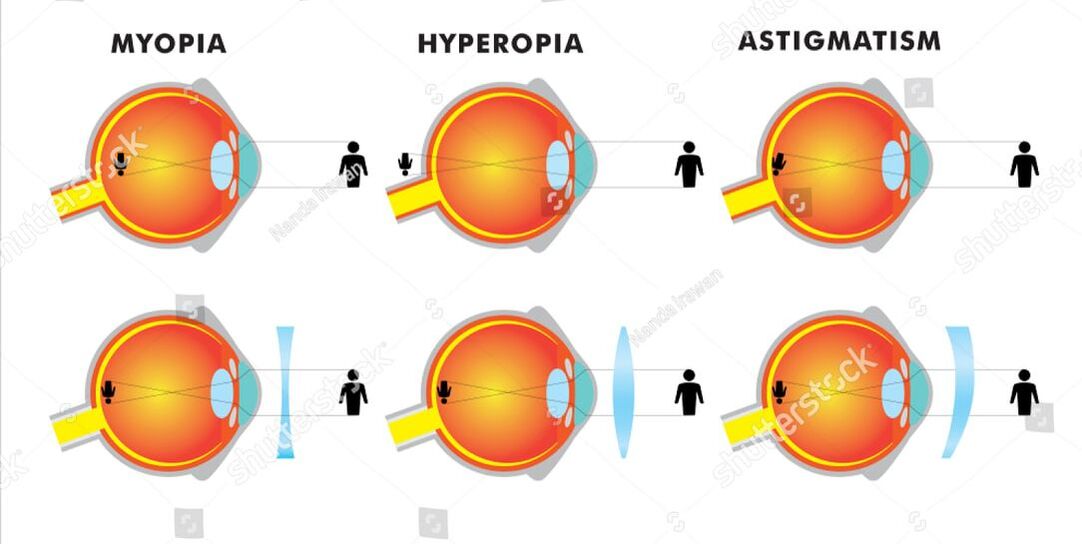what is a refractive error?
When children are born their eyes are small and they are naturally long-sighted (hyperopic). As they and their eyes grow this reduces their refraction until they become 'normal' sighted. This process is called emmetropization. Most children, therefore, do not need glasses. However some children can be more longsighted than the normal range (hypermetropic) or become more short-sighted (myopic), have a different refraction in each eye (anisometropic) or have astigmatism, which means they need to have their eyes checked and glasses prescribed to ensure their vision develops properly.
If there is a history in your family of needing to wear glasses in childhood or you are concerned about your childs vision it is worth getting your children's eye tested sooner rather than later.
If there is a history in your family of needing to wear glasses in childhood or you are concerned about your childs vision it is worth getting your children's eye tested sooner rather than later.
MYOPIA - SHORTSIGHTMyopia is increasing, it is predicted that half the world's population will be myopia by 2050. Myopia is where the eye continues to grow and get longer meaning that objects in the distance are focused in front of the retina and are blurred without glasses (refractive) correction.
|
what are the risks with being myopic?As well as needing glasses or contacts lenses to be able to see high myopia is associated with the following:
|
WHAT CAN I DO TO HELP SLOW MYOPIA?
|
|
Encouraging the following can help reduce the chance of your child becoming myopic or slow down the rate of progression of the myopia
|
|
|
2 HOURS A DAY OUTDOOR PLAY
Spending at least 2 hours a day outdoors in outdoor light prevents myopia, so encourage outdoor sports, walks and trips to the playground
|
LIMIT SCREENTIME
Less is more, ideally less that 2 hours of screen time per day in school age children
Take a break every 20 minutes |
KEEP YOUR DISTANCE
Ideally digital devices should be viewed from at least 60cm /2 ft away
|
|
BOOK AN APPOINTMENT
|
T: 02380914471
@: [email protected] |
My child is already myopic, is there any treatment?Myopia Control are treatments aimed at slowing the rate the myopia progresses. You child would need to have a full examination first and treatment only recommended if appropriate.
|
|
|
LOW DOSE ATROPINE EYE DROPS
Atropine drops widen the pupil of the eye and change its ability to focus. Low dose Atropine eye drops used daily at night-time have been shown to reduce the rate of progression of myopia by reducing the growth of the eye.
|
These glasses use Defocus Incorporated Multiple Segments (D.I.M.S.) Technology to defocus the peripheral vision whilst correcting the distance vision. It is this peripheral defocus which is thought to slow the growth of the eye and reduce myopia progression.
Peripheral defocus contact lenses These are multifocal contact lenses, correcting the distance vision but defocusing the peripheral |
ORTHOKERATOLOGY (ORTHO-K) LENSES
These contact lenses are worn at night and change the shape of the front of the eye (cornea) to correct the blurry vision during the day. Once you stop wearing them the myopia returns although it may be that they reduce the progression of myopia.
All contact lenses carry the increased risk of getting a corneal infection which may permanently damage vision. It is therefore extremely important that your child can correctly wear, clean, and store the contact lenses to avoid infection. |


